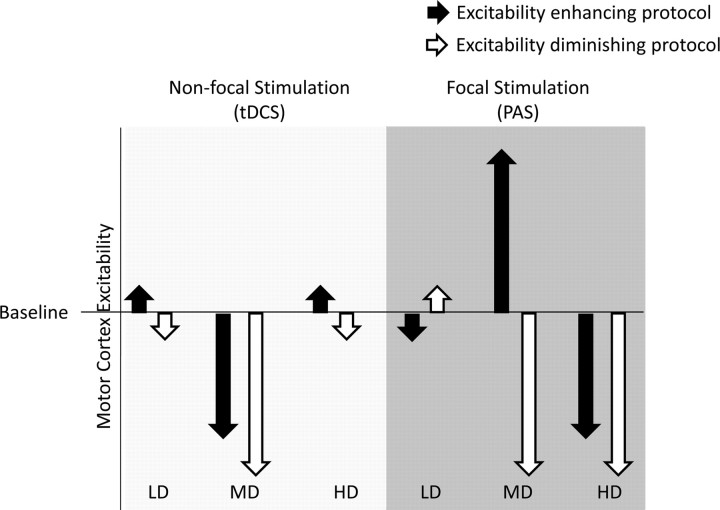Figure 4.
Summary of the effect of different dosages of l-DOPA coupled with tDCS/PAS on motor cortex excitability. Shown are the effects of low-dose (LD; 25 mg), medium-dose (MD; 100 mg), and high-dose (HD; 200 mg) l-DOPA on motor cortex excitability level. Nonfocal stimulation by tDCS abolishes stimulation aftereffects at low and high doses but preserves inhibitory plasticity induced by cathodal tDCS and reverses the facilitatory aftereffects of anodal tDCS to inhibition at medium dosage (Monte-Silva et al., 2010). Focal, associative, and synapse-specific stimulation by PAS, when coupled with low-dose l-DOPA, abolishes aftereffects of both facilitatory and inhibitory PAS. Medium-dose l-DOPA preserves/prolongs the aftereffects of PAS, whereas high-dose l-DOPA preserves only inhibitory aftereffects of PAS-10 and reverses facilitatory aftereffects of PAS-25 to inhibition. White arrows indicate excitability-diminishing stimulation protocols (cathodal tDCS or PAS-10); black arrows indicate excitability-enhancing stimulation protocols (anodal tDCS or PAS-25).

